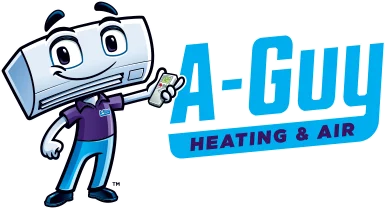In recent years, ductless heat pump systems have become an increasingly popular option for homeowners seeking efficient, customizable, and cost-effective heating and cooling solutions. Unlike traditional HVAC systems, ductless heat pumps do not require extensive ductwork, making them ideal for homes with unique layouts, new additions, or older properties.
Ductless heat pump systems, also known as mini-split systems, provide both heating and cooling capabilities without relying on a network of ducts to distribute conditioned air throughout your home. Instead, they consist of an outdoor compressor unit linked to one or more indoor air-handling units, delivering conditioned air directly to individual rooms or zones. This design results in several advantages over traditional systems, including greater energy efficiency, flexible installation options, and improved air quality.
Delve into the world of ductless heat pump systems, outlining their advantages, how they work, and why it’s essential to enlist professional help from our skilled technicians for installation and maintenance. By understanding the benefits of ductless heat pump systems, you can choose the right solution for your home, optimizing comfort, efficiency, and overall performance.
How Ductless Heat Pump Systems Work
Understanding the functioning of ductless heat pump systems can help you appreciate their unique advantages in providing efficient heating and cooling for your home. Let’s explore their working mechanism in more detail:
1. Components of a Ductless Heat Pump System
A ductless heat pump system consists of an outdoor compressor unit and one or more indoor air-handling units. These units are connected through small refrigerant lines and electrical wiring, eliminating the need for traditional air ducts. The outdoor unit houses the system’s compressor, which is responsible for circulating refrigerant between the indoor and outdoor units. Meanwhile, the indoor unit contains an evaporator coil and blower wheel to provide either cooling or heating, depending on the season.
2. Operation of Ductless Systems
In cooling mode, the indoor unit’s evaporator coil absorbs heat from your home’s air, and the refrigerant carries this heat to the outdoor unit, where it is released to the outdoors. In heating mode, the process is reversed; the outdoor unit collects heat from the outside air, even in cold temperatures, and transfers it to the indoor unit, where it is distributed into your home.
These systems can maintain consistent temperatures by constantly adjusting the heat transfer rate based on the room’s temperature, ensuring efficient and precise climate control.
Key Advantages of Ductless Heat Pump Systems
Now that we have a basic understanding of how ductless heat pump systems work, let’s delve deeper into their specific benefits compared to traditional heating and cooling options.
1. Energy Efficiency
As mentioned in the introduction, one significant advantage of ductless systems is their energy efficiency, primarily due to the absence of ductwork. Traditional HVAC systems may experience significant energy loss due to leakage in their ducts and heat transfer occurring within the ducts. Without ducts, ductless systems avoid this energy loss, leading to lower energy bills and a reduced carbon footprint.
2. Customizable Comfort
Ductless heat pump systems allow you to create temperature zones in your home, providing the flexibility to condition specific areas based on personal preferences and usage patterns. With traditional systems, homeowners often face inconsistent temperatures as a central thermostat controls the entire system. In contrast, ductless systems enable tailored comfort for individual rooms or zones, ensuring consistent temperature control throughout your home.
3. Easy Installation
Ductless heat pump systems are relatively easy to install, especially when compared to the complex process of installing or retrofitting ductwork for a traditional HVAC system. With no need to create extensive duct networks, ductless systems can be installed in locations where traditional heating and cooling solutions would be impractical or too invasive. This makes them ideal for room additions, repurposed spaces, or older homes without existing ductwork.
4. Improved Indoor Air Quality
Air quality is another area where ductless systems excel. Traditional forced-air systems tend to accumulate dust, allergens, and other contaminants within the ductwork, which can negatively impact indoor air quality. Since ductless systems don’t require ducts, they avoid this issue altogether. Additionally, the indoor units typically feature built-in air filters that remove particulates from the air, ensuring cleaner and healthier indoor air for you and your family.
Selecting the Right Ductless System for Your Home
As with any heating and cooling solution, choosing the right ductless heat pump system for your home requires careful consideration of various factors, including your home’s size, layout, insulation, and climate. Consulting with our professionals will help you determine the best option tailored to your specific needs.
Conclusion:
Ductless heat pump systems present numerous advantages for homeowners seeking energy-efficient, customizable, and easy-to-install heating and cooling solutions. With a thorough understanding of how these systems work and the benefits they offer, you’re well-equipped to make an informed decision about whether a ductless heat pump system is right for your home.
Rely on our experienced technicians at A-Guy Heating & Air for expert installation and maintenance services that will ensure your ductless system operates at peak performance. Contact us today to learn more about our ductless heat pump solutions in Orlando Park. IL, and experience the comfort, efficiency, and convenience that these systems can bring to your home!


